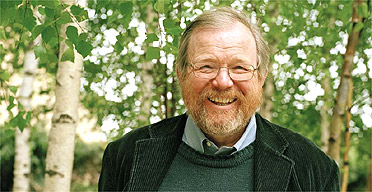 Bill Bryson reminds me a lot of James Burke. Burke, now in his late 70s, hosted those Connections television series and wrote several books with a similar theme, describing how one scientific innovation or historical event led to others in totally unexpected ways. In Twin Tracks, for example, Burke tells how Mozart's opera, The Marriage of Figaro, led to the development of the Stealth bomber in not one but two different ways.
Bill Bryson reminds me a lot of James Burke. Burke, now in his late 70s, hosted those Connections television series and wrote several books with a similar theme, describing how one scientific innovation or historical event led to others in totally unexpected ways. In Twin Tracks, for example, Burke tells how Mozart's opera, The Marriage of Figaro, led to the development of the Stealth bomber in not one but two different ways.Bryson is less disciplined than Burke -- even he doesn't seem to know where he's going in his rambling -- but he is more fun (and Burke has a keen wit) and much easier to follow. Reading At Home is something like listening to my late father (or any old person) tell stories. One tale leads to another and then another until you begin to wonder how he got so far away from the original subject.
This book, published in 2010, is subtitled "A Short History of Private Life." Never mind that it's more than 500 pages long. Ostensibly At Home tells about each of the rooms in an old English house, from the hall to the attic, except that Bryson never stays on subject and sometimes never seems to find his subject at all. His discussion of the dining room leads him to the subject of salt, which leads him into scurvy, then vitamins, the spice trade, Christopher Columbus, Samuel Pepys' diaries, coffee. tea, sugar, opium and, somehow, the flatware used in a Victorian dining room.
In the same way, Bryson finds himself discussing rabid bats in his chapter on the study, Indian cotton in his chapter about the dressing room and both Charles Darwin and Herman Melville in his attic chapter. Like James Burke, he finds odd connections and follows them wherever they lead. It's an amazing ride just to follow along.

No comments:
Post a Comment